BioShock Infinite's ending explained: Answering all of Columbia's questions
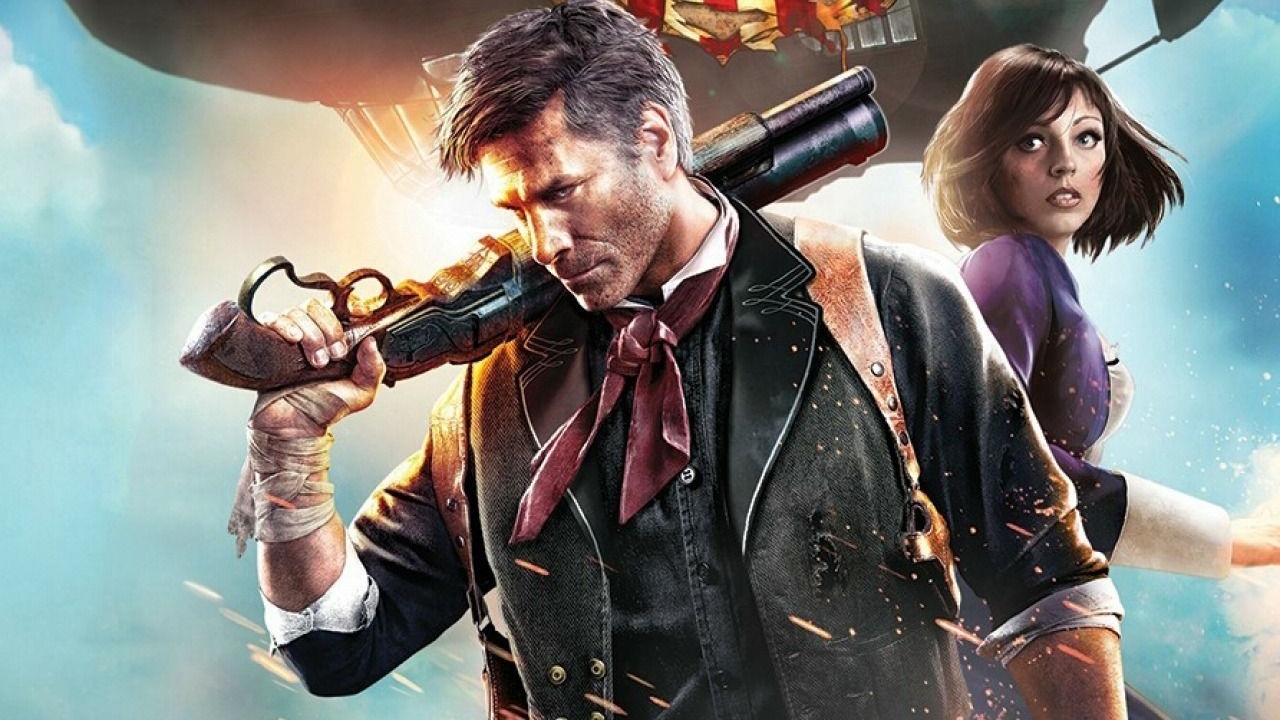
So you've finished BioShock Infinite, and you probably have some questions. The story is actually quite straightforward when you break it down, but some details are either left ambiguous, or hidden away in Voxophones. Here we present 19 of the game's mysteries and attempt to solve them in a digestible Q&A format. Remember, though - some of this is speculation, or our personal interpretation. You might have your own ideas...
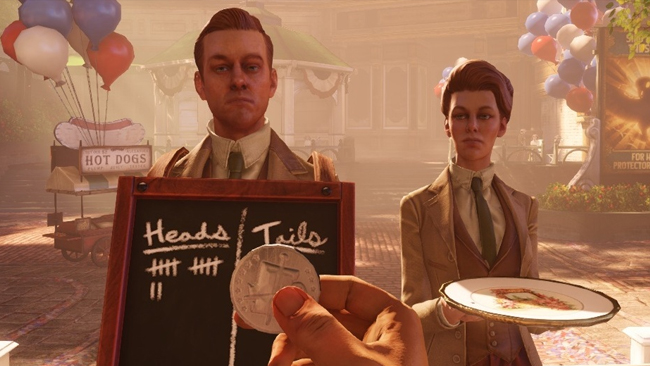
Who are the Luteces?
The Lutece twins are, in fact, the same person. "What separates us now but a single chromosome?" asks Rosalind in a Voxophone found in Emporia. She was a physicist, and developed the technology that allows Columbia to float. During her experiments she met a male version of herself from another universe, Robert, whom she refers to as her 'brother'. Together, they're incredibly powerful, and able to travel between universes freely.
Initially, the Luteces were working for Comstock. They devised the plan to take Booker's daughter through another reality, under the pretence that he was 'selling' her to wipe away his gambling debts. But realising that Comstock's prophecy - "The Seed of the Prophet shall sit the throne and drown in flame the mountains of man" - would come true, they turned against him. Booker is pulled into their universe and given a mission: find Elizabeth and take her away from Columbia, thus preventing a future in which she accepts Comstock's philosophy and becomes a tyrant.
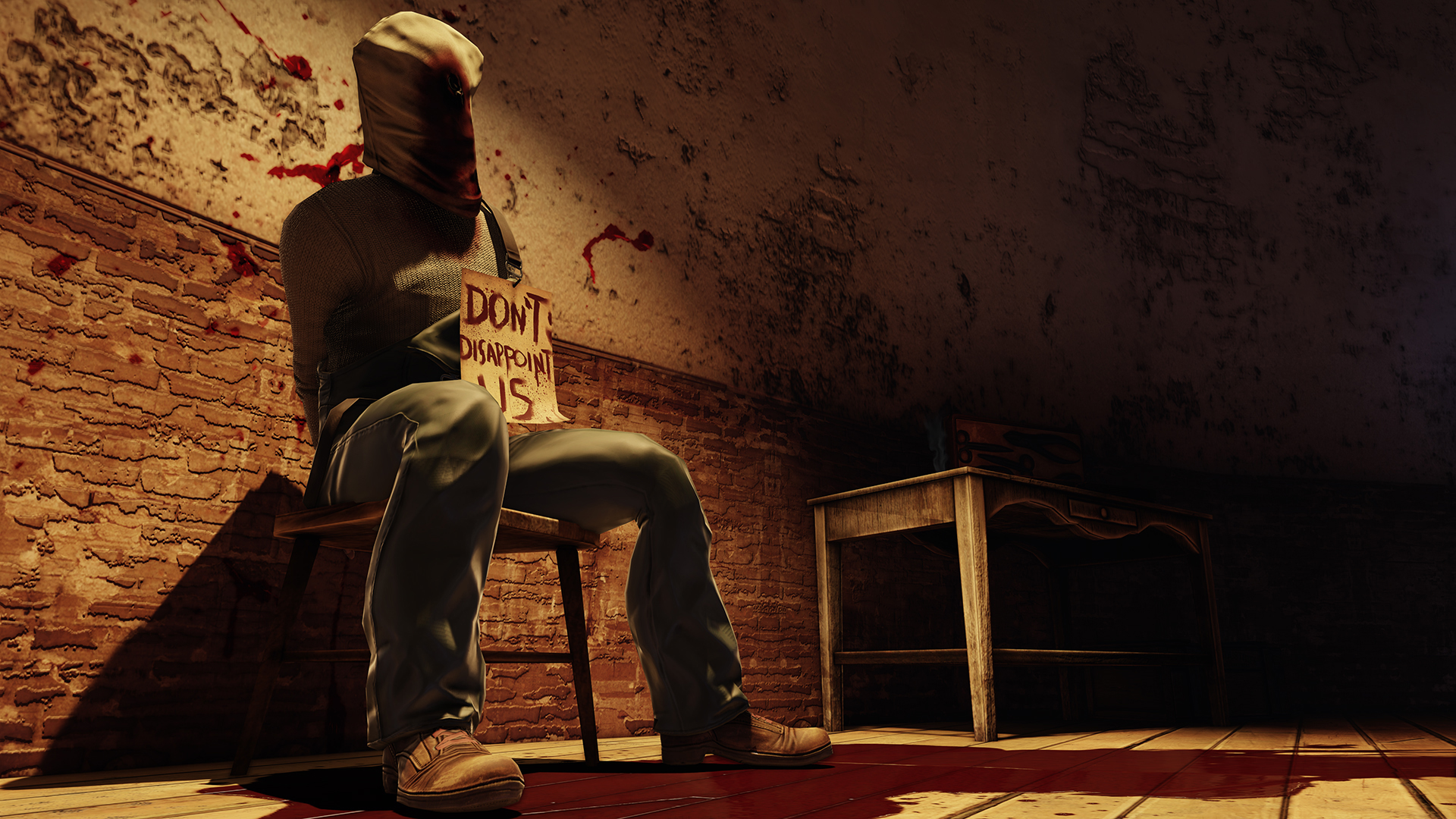
Who's the dead guy in the lighthouse?
After Booker is dropped off by the Luteces, he finds a dead man tied to a chair. He has a pillowcase pulled over his head, and appears to have been executed. It's clearly the work of a professional, and not just a random murder. On the floor below, a note signed 'C' is pinned to a map charting Columbia's movements: 'Be prepared. He's on his way. You must stop him.'
The note was left by Comstock. He knew Booker, the 'False Shepherd', was on his way to Columbia, and instructed the lighthouse keeper (or an assassin posing as one) to stop him reaching the rocket. But the Luteces got there first and killed him, because they didn't want him interfering with their plans. Why was he killed so violently, though? And left out on display with a sign saying 'Don't disappoint us' hung around his neck? To show Booker that his employers mean business, and not bringing them Elizabeth would have similarly gruesome consequences.
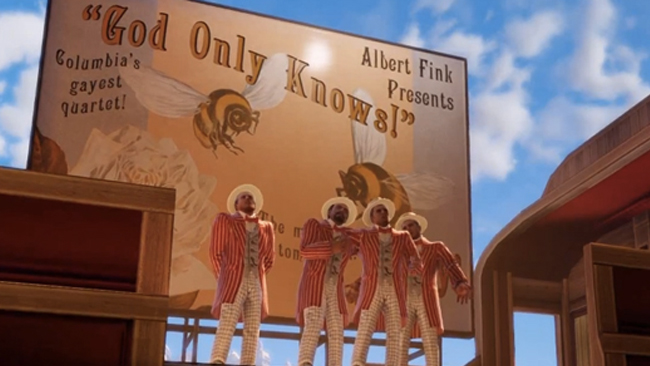
Why do we hear contemporary music in 1912 Columbia?
As you travel through the city, you often hear anachronistic music. A barbershop quartet on a flying barge singing The Beach Boys' God Only Knows (1966); an organ grinder version of Cyndi Lauper's Girls Just Wanna Have Fun (1984) on Battleship Bay's boardwalk; an old woman singing Creedence Clearwater Revival's Fortunate Son (1969) in Shantytown; a blues version of Soft Cell's Tainted Love (1981) in the Graveyard Shift bar.
The answer to this mystery can be found in Emporia, in a building called Magical Melodies. You find a body lying on the floor surrounded by instruments, clutching a Voxophone. On it, the voice of Jeremiah Fink reveals that the man, a composer he calls the 'Mozart of Columbia', has been hearing the music through the tears and copying it. Another clue can be found much earlier on the quartet's barge, on which a sign behind them reads: "Hear the music of tomorrow... today!"
Weekly digests, tales from the communities you love, and more
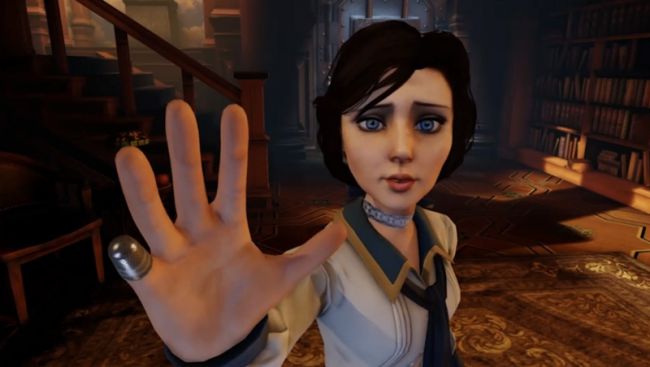
How did Elizabeth get her powers?
On Monument Island you find a Voxophone recorded by Rosalind Lutece titled 'The source of her power'. "What makes the girl different?" she muses. "I suspect is has less to do with what she is, and rather more what she is not. A small part of her remains from where she came. It would seem the universe does not like its peas mixed with its porridge."
This 'small part' is Anna DeWitt's pinky finger, which is severed when she's pulled through the collapsing tear from Booker's reality to Comstock's. By being physically present in two places at once, Elizabeth is able to travel between, and open doors to, other universes. At first the full extent of her powers are stifled by the Siphon (more on that later), but when it's destroyed at the end of the game she finds herself able to open infinite doors to infinite universes.
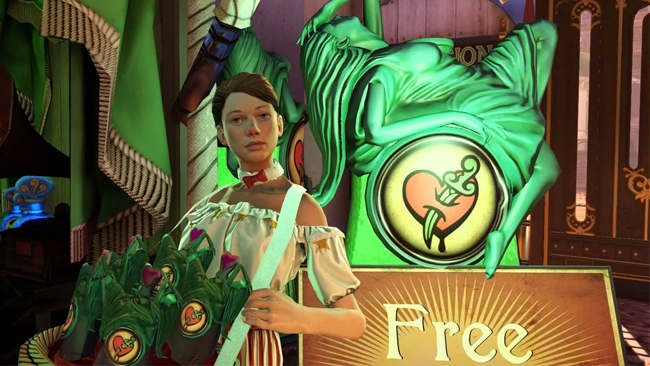
Where did the Vigors come from?
In the first BioShock we learn that biologist Brigid Tenenbaum created Plasmids - which have similar properties to Vigors - by extracting DNA-rewriting miracle-juice ADAM from sea slugs. In BioShock Infinite the origin of the Vigors, manufactured by Fink, is never explicitly revealed. But there's a clue to where they could have come from in the Magical Melodies Voxophone.
"These holes in the thin air continue to pay dividends," says Fink. "I know not which musician you borrow your notes from, but if he has half the genius of the biologist I now observe, well..." That biologist, presumably, being Tenenbaum. He may have been observing her work in Rapture through a tear, stealing her secrets, and using them to develop his Vigors. In fact, it's likely that all of Fink's success is the result of this kind of multidimensional industrial espionage.
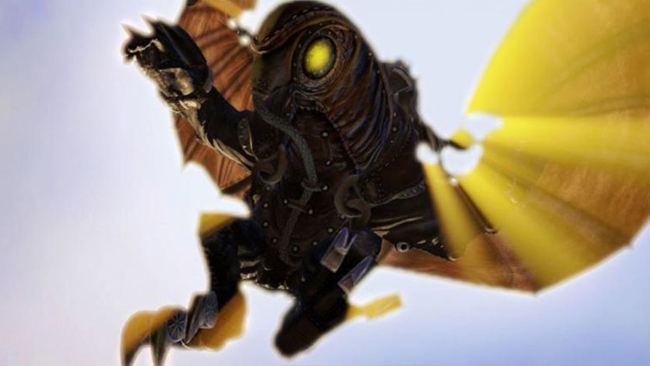
Who, or what, is Songbird?
Fink also created Songbird, and a Voxophone found in Finkton suggests that the technology for it also came from Rapture: namely, the Big Daddies. "These holes have shown me yet another wonder," he says. "They illuminate a merger of machine and man that is somehow the lesser, yet the greater, of both parties. The process seems to be irreversible. Perhaps, though, Comstock will have some need of this kind of thing to keep watch in that tower of his."
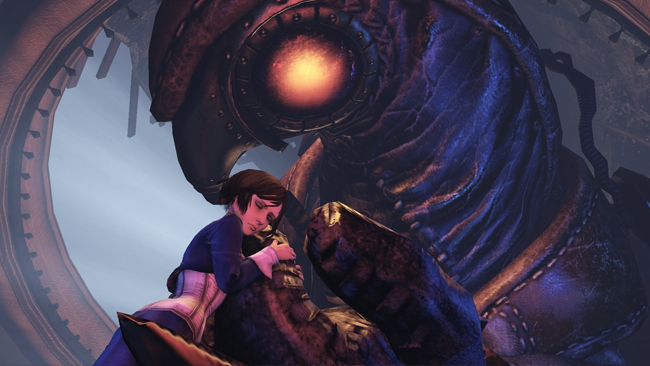
But who is the man inside the machine?
An unlikely, but interesting, theory is that it's actually a Booker DeWitt from another universe, captured by Comstock and transformed into Songbird to act as Elizabeth's guardian. The creature exists to protect and care for Elizabeth - like a father. This may explain why it so aggressively pursues anyone who tries to take her away. Far-fetched? Maybe, but remember that this is a game where you can fire crows from your hands.
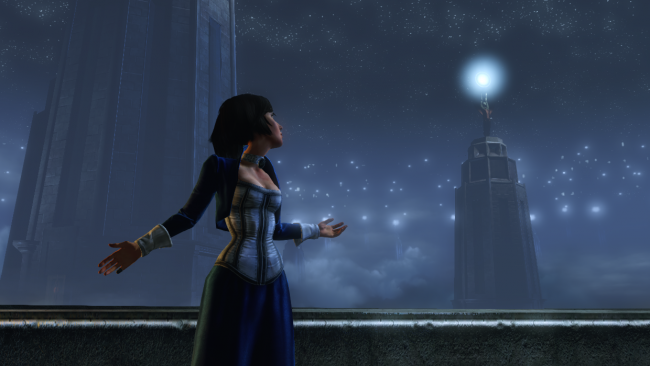
What's the significance of the lighthouses?
The lighthouses are a visual representation - or perhaps a physical manifestation, depending on how you choose to interpret it - of Elizabeth's ability to travel between infinite worlds, unlocked when the Siphon is destroyed. "They're doors," she explains to Booker in the ending. "Doors to everywhere. They're a million, million worlds. All different, all similar. Constants and variables. There's always a lighthouse, there's always a man, there's always a city. I can see them through the doors. Sometimes something's different, yet the same."
In BioShock Infinite's universe, the many-worlds interpretation of quantum mechanics is considered reality: the idea that all possible alternative futures and histories exist. Elizabeth's powers allow her to traverse these worlds, and the lighthouses are gateways to them. This 'sea of doors' (the title of the final chapter) may be a physical space, or a metaphysical one: an illusion created by Elizabeth to help Booker understand her new powers.
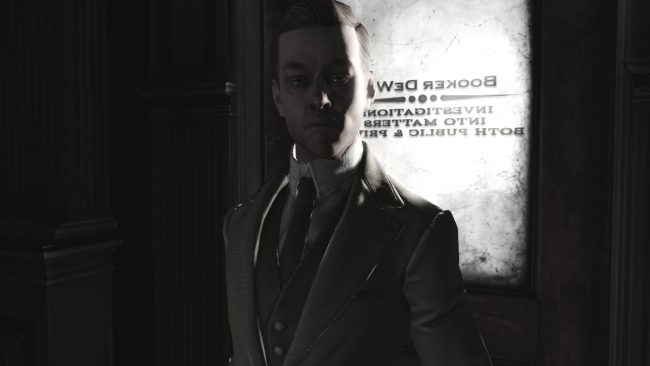
How did Booker become Comstock?
Booker DeWitt fought with the US Army in the infamous Wounded Knee Massacre, which left him mentally scarred. He later became an agent for the Pinkertons, but was fired for using 'extreme methods', as well as an escalating gambling and alcohol addiction. In 1912, a desperate DeWitt is approached by Robert Lutece, who offers him a chance to 'wipe away the debt' - by handing over his daughter, Anna. This leads to the events of BioShock Infinite.
But in another reality, Booker's life took a radically different turn. After Wounded Knee he's baptised in an attempt to wash away his sins, and takes the name Zachary Hale Comstock to distance himself from his troubled past. He meets Rosalind Lutece, builds Columbia, and becomes obsessed with the concept of a racially pure 'New Eden'. Columbia secedes from the United States and disappears into the clouds, with Comstock as its tyrannical ruler.
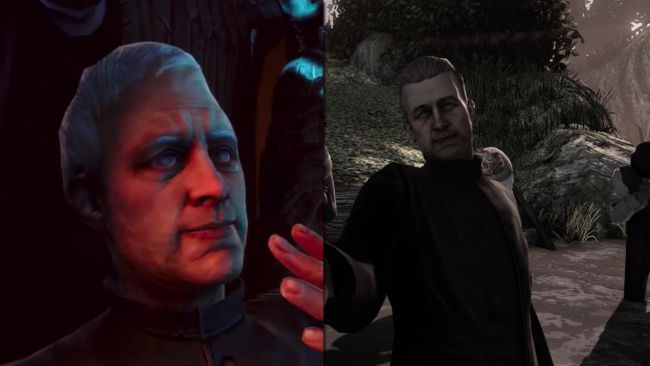
Who is Preacher Witting?
When Booker first arrives in Columbia, he has to accept a baptism from an old preacher to proceed into the city. This is the same priest who baptises him after Wounded Knee, leading to him becoming Comstock. Why doesn't he recognise him, though? If you look closely at Witting's eyes in both the ending flashback and the welcome centre sequences, they're cloudy. Witting is blind. So when he dunks Booker in the water he doesn't realise who it is. Or does he?
Comstock knew Booker would come to the city eventually - it was all part of his great 'prophecy', after all. So maybe Witting was in on it, and that's why he seems to try and drown him. "That idiot priest needs to know the difference between baptising a man and drowning him." grunts Booker as he wakes up in the Garden of New Eden. But he doesn't kill Booker outright, so his motivations for holding his head under the water are unclear.
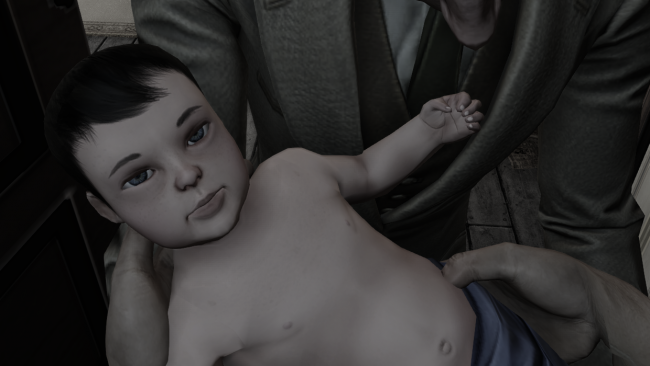
Why did Comstock want Booker's daughter?
It's revealed in a Voxophone recorded by Rosalind Lutece ('On the entropy of genes') that continued exposure to tears has rendered Comstock infertile. "He seems to have been made sterile by simple exposure to our contraption," she says. "A theory: just as sexual reproduction can de-emphasise the traits of each parent, so goes the effect of multiple realities on our own. Your traits dissipate, until they become unrecognizable, or cease to exist."
Comstock is unable to have a daughter of his own, so he plots to take Booker's with help from the Luteces. Comstock names her Elizabeth, the 'Seed of the Prophet', and keeps her locked away in the tower, protected by Songbird. He's dying from cancer - another side effect of exposure to the tears - and he wants her to be his heir. "The Lord is calling me home," he reveals in a Voxophone. "I feel His love in every tumour, because they are the train which takes me to his station. And I go with joy, knowing that Elizabeth will take my place."
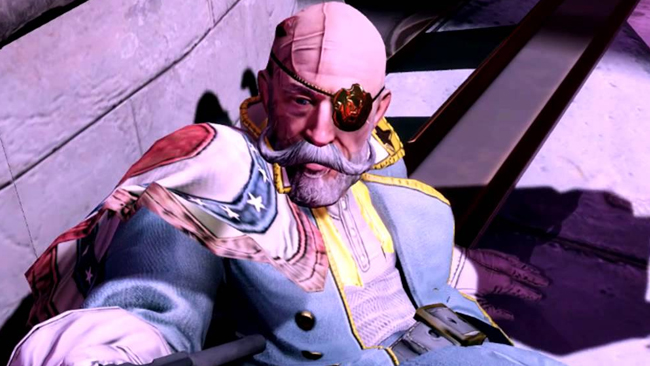
Why doesn't Slate recognise Comstock?
Cornelius Slate fought with Booker at Wounded Knee, and he torments him in the Hall of Heroes, but why doesn't he realise that Comstock and him are the same person? The answer lies in yet another Rosalind Lutece Voxophone. "The prophet is dying," she says. "The metastasis has aged him so quickly. Why does this Comstock decay, while a Comstock in another world remain fit? If genetics are destiny, what accounts for the difference? Perhaps exposure to the contraption?"
Comstock is only 38 years old at the height of his rule in Columbia, but this suggests that exposure to the tears has accelerated his aging, giving him the appearance of a much older man. This is why Slate doesn't make the connection between the two. Early footage of BioShock Infinite showed a younger, clean cut Comstock, but this was likely changed to make it more believable that people wouldn't notice the similarity between the two.
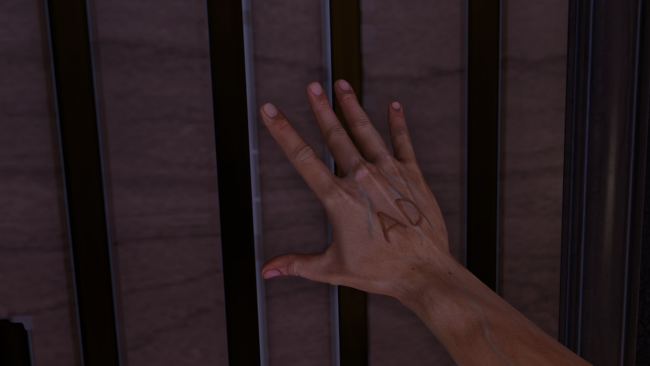
What does the 'AD' mark on Booker's hand mean?
The game opens with a quote from Rosalind Lutece's book, Barriers to Trans-Dimensional Travel: "The mind of the subject will desperately struggle to create memories where none exist." When we start the game, Booker has already tried, and failed, to rescue Elizabeth multiple times. This is revealed by the Lutece twins' cryptic dialogue ("He DOESN'T row."), the coin toss, and the dead man in the lighthouse, who presumably scuppered an earlier attempt.
Traveling between dimensions, it seems, distorts your memory. The brand on Booker's hand was self-inflicted, and stands for Anna DeWitt: a reminder of his daughter and his mission. Comstock's 'prophecy' (actually gleaned through tears) says that the person who bears the mark is the False Shepherd. He knows Booker is coming to Columbia to rescue Elizabeth, and this is a way for him to be alerted of his presence. When the police officer spots it the city is put on high alert, and Comstock throws an army at Booker to stop him reaching her in the tower.
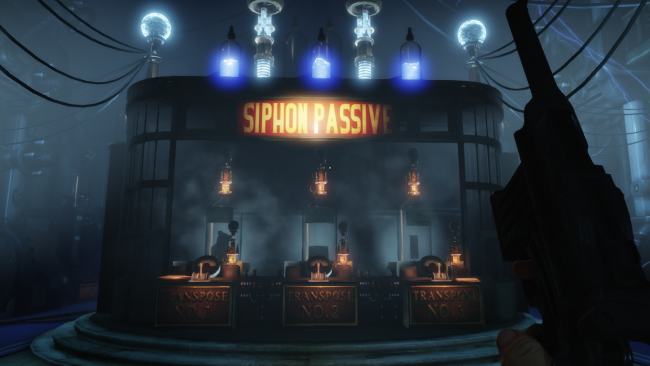
What was the purpose of the Siphon?
Created by Rosalind Lutece, the Siphon is the device that allows people to open tears. It's through this that Comstock looked to the future to create his so-called prophecy. The machine was sabotaged by Fink after Comstock discovered the Luteces plan to send Elizabeth back to Booker's universe, to stop her becoming his successor. Its destruction resulted in random tears opening all over Columbia, and trapped the Luteces between universes. This is the reason they're so powerful, and able to skip between realities effortlessly.
The Siphon also served another purpose: limiting Elizabeth's powers. This is why she couldn't just escape her tower by opening a tear. When she opens the tear to Paris when you first see her, she seems to be struggling, as if she's using all of her energy. A gameplay mechanic that was dropped from the final game saw Elizabeth becoming increasingly exhausted as she used her powers. It's only when Songbird destroys the Siphon that her full potential is unlocked.
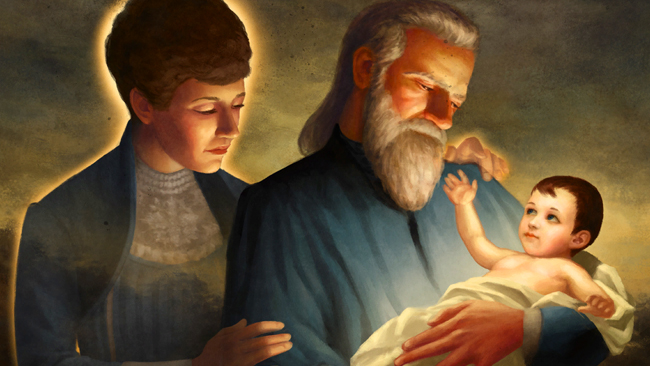
What really happened to Lady Comstock?
The official story in Columbia is that Lady Comstock was murdered by the leader of the Vox Populi, Daisy Fitzroy. The truth, however, is that Comstock had her killed after she threatened to reveal the truth about where Elizabeth came from - information given to her by Rosalind Lutece. "Lady Comstock seems to believe the child is a result of some errant act of carnality between myself and her beloved Prophet," she explains in a Voxophone ('Child of Silence'). "I told the poor woman the truth: that the child was a product of our little contraption."
Fitzroy was framed for the murder, demonising the Vox Populi, even though she once spoke fondly of Lady Comstock: "Days at Comstock House was simple," she explains ('A place in the world'). "Hard work, sure - but simple. Lady Comstock even had a kind word now and then. Almost enough to make me think I had a place in their world."
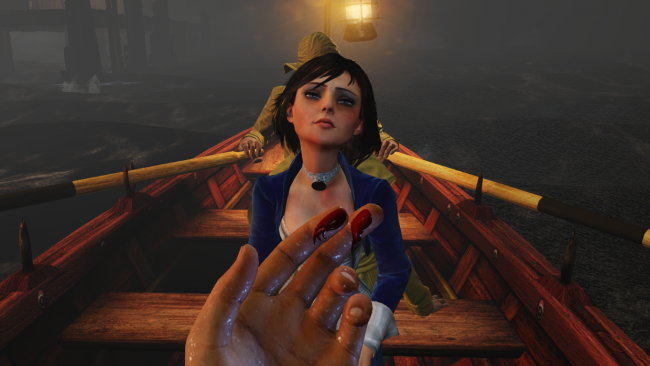
What causes the nosebleeds?
When a person's memories conflict as a result of shifting between realities, their nose bleeds. It comes back to what Rosalind Lutece wrote in her book: "[The mind will] struggle to create memories where none exist." Booker's nose bleeds when he comes into contact with Comstock because his brain is, subconsciously, trying to piece together the memories of how he ended up there - even though no such memories exist.
It's a physical side effect of moving between universes. The brain, unable to link two realities, tries, and fails, to create new memories, causing the nosebleeds. This same conflict is what causes Chen Lin and the police officers you killed to act strangely when you jump through the tear Elizabeth opens in Finkton. "They're alive," she explains. "But they remember being dead."
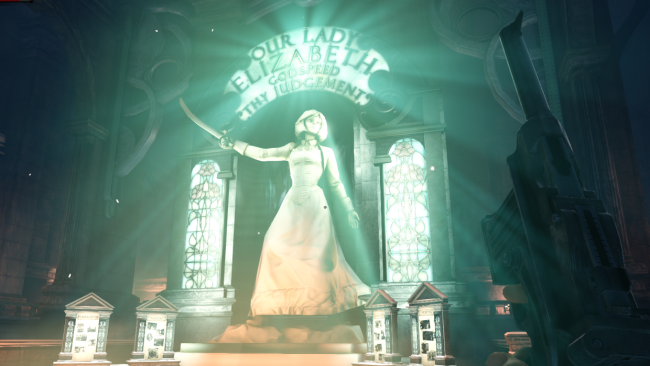
Why do we see an older Elizabeth attacking New York?
This is the grim future that the Luteces are trying to prevent by hiring Booker to rescue Elizabeth. Without their intervention, she will grow up indoctrinated by Comstock's philosophy, and eventually become his successor when he succumbs to his illness. The end result is Columbia attacking New York City in 1984 - the fulfillment of Comstock's 'prophecy' about the 'Seed of the Prophet... drowning in flame the mountains of man.' Booker sees this reality for himself, where a much older Elizabeth, filled with regret, pleads with him to stop this from happening.
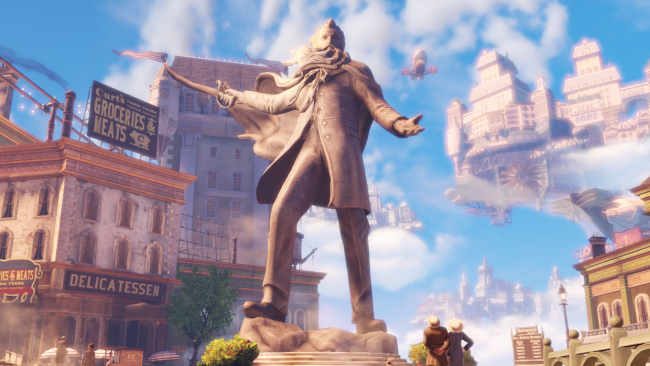
Why attack New York?
It's likely Comstock sees the famously multicultural city as the epitome of 'the Sodom below'; a den of sin that he wants to wipe from the Earth. "What is Columbia if not another ark for another time?" he says, implying that the attack on the United States is his vision of a biblical 'rain', from which his city is the only refuge. Booker fails repeatedly to rescue Elizabeth, despite the Luteces' best efforts, but in the end Comstock's plan is foiled another way…
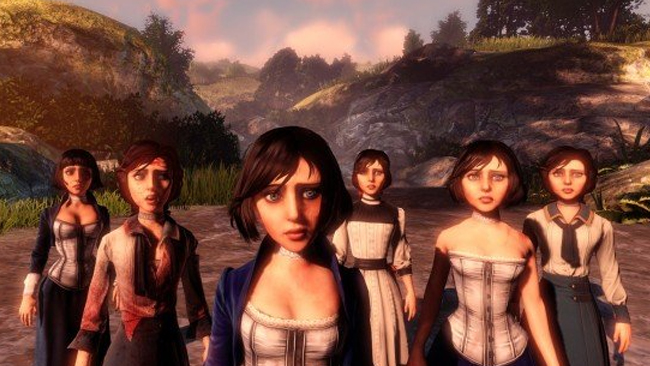
Why doesn't the last Elizabeth disappear?
All except one. As the camera pulls back and the Elizabeth copies vanish, one remains, then the screen abruptly cuts to black. No Columbia means no Elizabeth, but was one version of her able to survive? Destroying the Siphon unlocked an incredible power in her, and she became almost godlike. It could be that this version of her was able to transcend space and time, and thus wasn't affected by the destruction of Comstock's reality. That's a positive way to look at it.
Another way of looking at it is that she disappeared along with the rest of them, and the credits roll just before she does. If this is the case, all traces of the Elizabeth you got to know and grew to love throughout the game are destroyed. The sudden cut to the credits is obviously intended to make this ambiguous, leaving players to decide her fate for themselves.
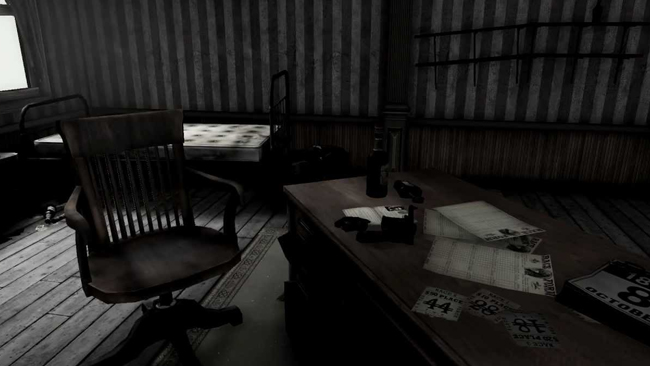
What does the scene after the credits mean?
When the lengthy credits finish, we appear back in Booker's office in New York. "Anna?" he calls out, as a child's music box plays in the background - or perhaps in his head. Then we get the option to interact with her bedroom door. Booker pushes it open, approaches her crib, and... that's it. This is another moment that you can interpret a number of ways.
One outcome is that, by eliminating the Columbia timeline, Booker never sold Anna to Comstock, and they're still together. But even if this is the case, the detritus on his desk - betting slips, empty bottles - suggests that this is another version of the 'other' Booker. The one who returned from Wounded Knee a shell of a man. What happens next - whether Anna is in the crib or not - is left to your imagination. BioShock Infinite's ending is as happy, or as sad, as you want it to be.


